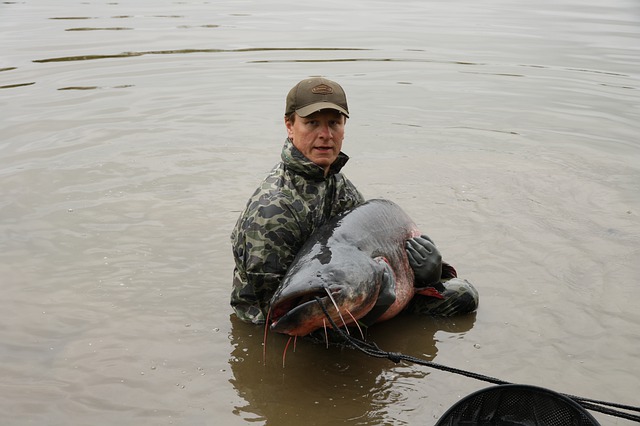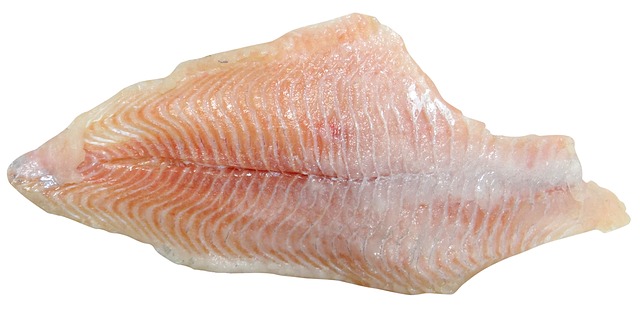Due to its strong flavor, catfish is a tasty bass fish. So, the best way to do with it is generally to cook and eat it. However, you need to debone it and make fillets out of it. But, the problem is you do not know how to debone a catfish.
Well, you don’t need to worry! In this blog post, I detailed here a step-by-step procedure on how to debone a catfish. There are also some side notes or friendly reminders that you can consider while doing this deboning process. So, check it out below and try it yourself!
Basic Steps on How to Debone a Catfish
The most comfortable and easiest way to eat a fish, especially a catfish, is by making it into fillets. However, since it has hard and leathery skin you basically need to learn ways to deboning a catfish. Here is a step-by-step guide on proper catfish deboning:
Step #1: Get a catfish
Initially, you need to have a catfish before you debone one. There are actually different ways of how you can get your catfish. Check here for strategies to have one:
*Catch them alive

Catfish are basically considered as bottom-feeders. And for you to catch them, you may either use the juglines or trotlines technique. You just need to be sure that the water source you are fishing is not polluted or laden with heavy metals.
*Get it from a fishing friend
You may basically have a friend who loves fishing. But, this friend of yours does not like the concept of cleaning any kind of fish. They usually just catch and release the fish afterwards. So, in case you have a friend that is a bass fisherman, try to get one from him. Definitely, he’s great on this and would have lots of bass fishes on his bucket.
*Buy a live catfish
Basically, you can purchase a good and kicking catfish in any farmer’s market or a live one swimming over a fish farm. This option of getting a catfish for deboning is actually the easiest method to acquire one. However, buying a live one from a market will make you missed out on a nice fishing experience.
*Go for a dead one
This technique of having a catfish is actually a sidestep. However, at some point, you may end up choosing this as it is your only option. You may find some grocery stores selling catfish already in fillets. Yet, there are good sellers who market the whole catfish in a cheaper amount. There are also times that they already skinned the catfish for your convenience.
Step #2: If you get it live, kill it
Actually, live catfish means that you have fresh ones for eating. So, part of the steps on how to debone a catfish that is still kicking is to kill it. If you do not know how, well, luckily there are numbers of ways to put the catfish to its end. Targeting it on a bull’s-eye will actually do the job perfectly.
Slaying the catfish on its head will definitely paralyze the fish and may put them to death. To target the catfish in the center, place it under the pointed part of the knife. Make sure that the knife is pointing at the brain and spinal cord of the catfish.
If you are already in this position, push the knife down into the brain cavity. Generally, doing this will give the catfish a painless feeling which is something similar to euthanasia.
Step #3: Make a cut over the catfish’s head
Before you debone a catfish, you need to cut first its head right after killing it. Look for the skin at the base of the catfish’s head. From here, cut through its skin this will be your markings in removing the head later on. Aside from that, this marking will also be an indication to start the skinning of the fish.
Step #4: Remove the fins
Next is to remove the fins of the catfish. In order to do this, you need to cut the fins on the back and on the stomach of the catfish. Generally, this will get into your way as you control the catfish. As you do the removal of the fins, you can opt to keep the small ones attached to the fish body. Moreover, you can also keep the tail to handle the catfish comfortably.
You should also be keen and pay much attention to removing the soft fins present on the catfish. Generally, these are just small fins if you will observe farm-raised catfish. Meanwhile, a channel catfish or an average lake catfish has larger fins.
These fins are responsible for creating blood and cutting through inflatable boats. Keep in mind that these fins are generally dangerous. So, it is actually better to remove this fin as soon as possible. Doing that may basically reduce the possibility of acquiring dangers during handling.
Step #5: Skinning the catfish
Basically, the catfish has a different skin texture based on its type. If you get a small-sized farm-raised catfish, you may generally notice thin and more subtle skin. Meanwhile, bigger and older catfish tends to possess thicker skin which can be more resistant to skinning.
Usually, skinning bigger and older catfish can be done by using pliers. This is the exact opposite with the smaller and younger ones as they have soft skin which can be removed through a slow method. Usually, skin removal of these fishes makes use of tweezers, pliers, sharp knife, or even bare fingers.
Here is a guide in properly skinning the catfish:
1-Cut a shallow slant on the side of the gills
Through a filet knife, cut behind the gills through a 45-degree position gearing into the head. Just make a cut at around 1/8 to 1/4 inch deep only. If you make cuts more than this, you may generally find it difficult to remove the skin of the catfish. Moreover, cut over the base of the catfish head so that the two cuts would be connected.

2-Cut from the head to the tail of the catfish traversing through the spine
From the bottom of the fish head, begin the cutting and then pull the knife down the body. Only make a shallow cut through the fish skin measuring around 1/8 to 1/4 inch. Moreover, maximize the use of your knife in working on the dorsal fin and end cutting once reaching the catfish’s tail.
Take extra care in cutting the dorsal fin as it has a sharp barb on its end. It may create puncture over the skin and, worse, may result in poisoning.
3-Slice the catfish’s skin downward its belly
Within the stomach of the catfish, create another deep cut measuring about 1/8 to 1/4 inch as well. This time, make sure that the cut should begin on the created incision on the head. Hold the knife and let it go down until the tail. Stop cutting once you reach the fin. Remember do not cut so deeply as it may cause puncturing of the internal organs of the catfish.
4-Create a vertical slits on both sides of the tail
Find the area within the tail of the catfish in which the scales stop and the fin starts. From there, cut down for around 1/8 to 1/4 inch deep using a filet knife. Do the cutting from the catfish’s spine until its belly. Keep in mind that these cuts should traverse with the two other cuts already been made.
5-Clamp on pliers on the skin underneath the gills of the catfish
Initially, using your bare fingers, peel a small portion of the catfish’s skin backwards. Afterwards, hold a sufficient amount of the skin for the pliers to pull. Loosen more skin portion to give pliers a better grip. Twist the pliers eventually.
6-Peel the catfish skin backwards gearing through the tail
Press down the head of the catfish against the cutting board. In a slow and smooth motion, peel the skin of the catfish away from its head. The skin should easily take off from the catfish body 0nce you reach the tail. Peel the skin on the other side of the catfish body using the same process.
Step #6: Take off the head and the guts
As we go along the process on how to debone a catfish, you should find the previous markings that you’ve already created around the head. Cut the vertebrae using a knife. However, if it is too thick for cutting, cut everything first and eventually bend the catfish head backwards against the body. Do this step until the vertebrae already separate from the head of the catfish.
Afterwards, cut all the remaining neural or connective tissue so that you can remove the head of the catfish. If you already removed the head, make a slit traversing the fish’s belly down to the anal fin at the side of the stomach cavity. Take off any unwanted pieces and, as much as possible, do not puncture the guts. Rinse the skinned catfish to see if you already got it all.
*FRIENDLY REMINDER:
If you do not know what to do with the head and the guts of the catfish, well, I suggest burying them under some plants within your yard. However, be sure that you dig sufficiently down the soil so that raccoons won’t go unearthing them.
Another suggestion is to use the catfish’s head as bait on the crab traps. Basically, you can make a fish stock using the catfish’s head. Just make sure to keep away the gills and any guts residuals as they may taste a little bit bitter. Clean and prepare the head and freeze it on a dated bag to make a stock.
Step #7: How to debone a catfish – cutting in fillets
Part of the ways on how to debone a catfish is through making fillets. Generally, there are two fillet cuts that you can do for your catfish – the dorsal cut and the ventral cut.

*Fillet Cut 1: the Dorsal Cut
Here’s the step that you can do in cutting a fillet through a dorsal cut:
- Initially, hold the knife in a parallel position of the catfish over the top part of its body.
- Gently slice from the top side of the catfish up to the midline of its body.
- Slice continuously until you reach the catfish’s vertebrae. Do it from the front up to the tail portion.
NOTE: In slicing, do not forget that the main objective in doing so is to cut the flesh of the catfish as close to that of its backbone. This is for you to take off the optimal amount of the fish for the fillet.
*Fillet Cut 2: the Ventral Cut
After doing the dorsal cut, it is not time for you to make fillet using a ventral cut. Check below on how to do it correctly:
- Basically, lift up the top half of the fillet.
- Let the knife work within the tail of the catfish and then go back to the stomach portion.
- As you go deboning the catfish, remember to hold up the tail part of the catfish.
- Trim down carefully over the ribs area of the catfish. This is to prevent leaving any ribs from the fillet.
- Wok on the backbone downwards and skim through the ribs to remove all the flesh.
Step #8: Finally, remove the second fillet
Once finished with deboning the catfish on one side, it is time to flip the fish and do the same process of deboning a catfish on the other side. Work with the deboning process very carefully to ensure that the meat will be taken off the bones completely.
What to do After Deboning a Catfish?
You already have a deboned catfish! Now, what? What are you going to do with those bones, carcass and deboned catfish or fillets? Well, you need to basically clean up all your mess from deboning a catfish.
- Disposed of the head, skeleton, and guts of the catfish
- Clean the cutting board and your counter area by scrubbing it with soap and water. Make sure that the water for cleaning is hot.
For the carcass:
Sometimes, there will be some tasty bits of flesh left on the bone of the catfish. Maybe you’ve missed it because you are using a dull knife in deboning a catfish. Or, you are just a beginner in doing so. Yet, this may also happen for those individuals who haven’t done the filleting for a long time.
In case you notice some flesh or bits of it, clean the ribs by trimming off those bits. Put those carcass inside a zip lock bag and freezer it. You can generally use it to make a fish stoke. Don’t forget to put a label on the bag.
For the fillets or fish chunks:
Well, after putting the fillets of the catfish in a bowl, it is actually ready for cooking. Fillets of catfish are good for frying, grilling, steaming or baking. You can also make a gumbo or soup using your catfish fillets. Catfish tacos are also a good and yummy option. Generally, the catfish has a very strong flavor and because of that, you may commonly find it as the main ingredient of spicy creole or East Asian menus.
Final Words
Deboning a catfish is actually easy. What makes it difficult is its leathery and hard skin if you get a large and old catfish. But, if you already know the proper ways of doing so, you will never find it hard to debone a catfish and make some fillets out of it. Well, there are plenty of dishes that you can do with the fillet of the catfish after deboning it. You can also make a stock out of its carcass. And the heads and guts can be used as plant fertilizer.


